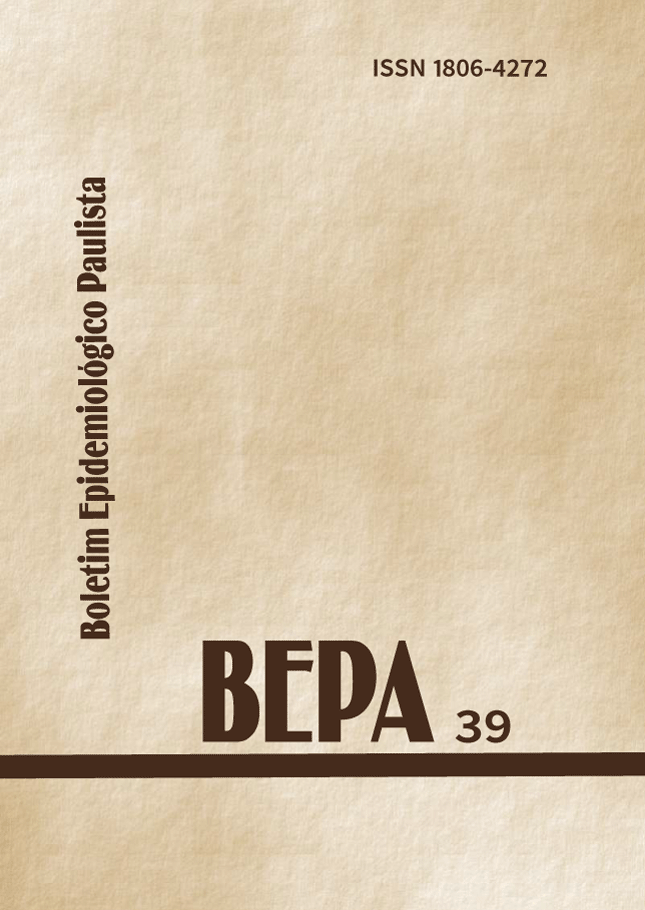Abstract
Tuberculosis is an infectious disease, transmitted by air. Tnhis disease has chronic evolution and is caused, among men, by Mycobacterium tuberculosis, M. bovis, M. africanun and M. microti. Tuberculosis has reemerged, presently, in a more intense rate, due to the special advent of HIV virus, posing a serious public health problem. The long time during which the patient must receive medication, associated to a high rate of adverse events, is one of the major reasons for the failure in tuberculosis treatment. This situation requests medicines with modified liberation, in order to improve treatment adherence, associated to a better welfare to these patients. Liposomes are modern vehicles in medicine. In vaccines, they act as an alternative to subunit forms and classic boosters, leading to effective products, of long lasting effects, with no hypersensitive reactions and which may be lyophilisated. These pharmaceutical forms are quite specific, and are able to reach specific regions, such as cellular receptors, as well as generating less secondary effects. Liposomes have lesser toxicity, since they need only small doses in order to reach therapeutic effects. The objective of this study is to develop liposomes packed with an important anti-tuberculosis medicine, rifampicin.
References
Reichman L.B. e Hershfield E.S. (ed). Tuberculosis: a comprehensive international approach. Nova York: Marcel Dekker, Inc., 1993.
CVE. Centro Vigilância Epidemiológica “Prof. Alexandre Vranjac”. Tuberculose São Paulo: Secretaria do Estado da Saúde, 1998.
Campinas LLSL, Ferrazoli L, Telles MAS, Tatsumoto NF, Biagolini REM, Ferraz SMP, Arpiani SO. Manual de orientação para coleta de amostras de escarro, e outros materiais para baciloscopia e cultura para diagnóstico e controle da tuberculose. Centro de Vigilância Epidemiológica “Prof. Alexandre Vranjac”. Divisão de Tuberculose, 2002.
MS. Ministério da Saúde. Manual de Normas para o Controle da Tuberculose, 1995.
Ansell PR. Hybridoma technology: a view from the patent arena. Immunol Today 2000; 21:357-8.
Borrebaeck CA. Antibodies in diagnostics – From immunoassays to protein chips. Immunol Today 2000; 21:379-82.
Glennie MI, Johnson PW. Clinical trials of antibody therapy. Immunol Today 2000; 21:403-10.
Little M, Kipriyanov SM, Le Gall F, Moldenhauer G. Of mice and men: hybridoma and recombinant antibodies. Immunol Today 2000; 21:364-70.
Milstein C. With the benefit of hindsight. Immunol Today 2000; 21:359-64.
Assis MA. Resolução de (+/-)-2-amino-1-butanol: precursor para obtenção de etambutol. [Dissertação de Mestrado]. Faculdade de Ciências Farmacêuticas, da Universidade de São Paulo. São Paulo, 2001. 91p.
Frezard F. Liposomes: from biophysics to the design of peptide vaccines. Braz J Med Biol Res 1999; 32:181-189.
Green S, Fortier A, Dijkstra J, Madsen J, Swartz G, Einck L, Gubish E, Nacy C. Liposomal vaccines. Advanced and Experimental Medical Biology 1995; 383:83-92.
Gregoriadis G. Engineering liposomes for drug delivery: progress and problems. Trends in Biotechnology 1995; 13:527-537.
Gregoriadis G, Mccormack B, Obrenovic M, Saffie R, Zadi B, Perrie Y. Vaccine entrapment in liposomes. Methods 1999; 19:156-162.
Beatty WL, Rhoades ER, Ullrich HJ, Chatterjee D, Heuser JE, Russell DG. Trafficking and release of mycobacterial lipids from infected macrophages. Traffic 2000; 1:235-247.
Armstrong JA, Hart PD. Response of cultured macrophages to Mycobacterium tuberculosis, with observations on fusion of lysosomes with Phagosomes. J Exp Med 1971; 134:713-740.
Crowle AJ, Dahl R, Ross E, May MH. Evidence that vesicles containing living, virulent Mycobacterium tuberculosis or Mycobacterium avium in cultured human macrophages are not acidic. Infect Immun 1991; 59:1823-1831.
Bruyn De, Bosmans JR, Nyabenda J, Van Vooren JP. Effect of zinc deficiency on the appearance of two immunodominant protein antigens (32 kDa and 65 kDa) in culture filtrates of mycobacteria. J Gen Microbiol 1989; 135:79-84.
Fifis T, Costopoulos C, Radford AJ, Bacic A, Wood PR. Purification and characterization of major antigens from a Mycobacterium bovis culture filtrate. Infect Immun 1991; 59:800-807.
Frehel C, Chastellier C, Lang T, Rastogi N. Evidence for inhibition of fusion of lysosomal and prelysosomal compartments with phagosomes in macrophages infected with pathogenic Mycobacterium avium. Infect Immun 1986; 52:252-562.
Fukui Y, Hirai T, Uchida T, Yoneda M. Extracellular proteins of tubercle bacilli. IV. Alpha and beta antigens as major extracellular protein products and as cellular components of a strain (H37Rv) of Mycobacterium tuberculosis. Biken J 1965; 8:189-199.
Horwitz MA, Lee BW, Dillon BJ, Harth G. Protective immunity against tuberculosis induced by vaccination with major extracellular proteins of Mycobacterium tuberculosis. Proc Natl Acad Sci 1995; USA 92:1530-1534.

This work is licensed under a Creative Commons Attribution 4.0 International License.
Copyright (c) 2007 Tulio Nakazato da Cunha, Ida Caramico Soares, Elizabeth N. De Gaspari
